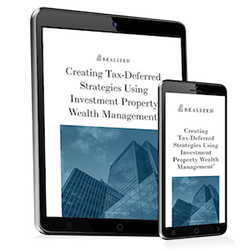
Owning rental property can be a great way to earn income, but sometimes investors need or want to sell a property for various reasons. Potential motivators include simplifying your portfolio (or changing the focus), preparing for retirement, and estate planning. Sometimes an investor may need liquid assets for another purpose. Whatever the reason, buying and selling property is an essential aspect of real estate ownership.
One typical goal of investing in real estate is to accumulate wealth. If you buy a property that appreciates, you profit from that gain. However, as with other types of income, the federal government expects to receive a share of your gain. Therefore, selling investment property for more than you paid (the basis) triggers a capital gains tax—either long-term or short-term, depending on whether you owned the property for more or less than a year.
The basis includes what you paid for the property, additional fees, and costs necessary for the acquisition. That can include closing costs, settlement fees, real estate taxes, title insurance, recording fees, the cost of obtaining a mortgage, and more. These items add to the adjusted basis.
Long or short-term capital gain
The length of time that you hold real estate affects the amount you may owe in taxes when you sell it. If you own property for less than a year and make a profit on the sale, you will owe short-term capital gains tax, which is the same rate as you pay on ordinary income. That is higher than the long-term capital gains rate for profit on the property you held for longer than a year.
Form 4797 is the correct method in most cases.
Whether you have a short-term gain, long-term gain, or even a loss, Form 4797 and Schedule D is the appropriate way to report the transaction. Form 4797 collects information about property sold, the accompanying gains or losses, and any appropriate depreciation recapture amounts. Don’t use Form 4797 to report the sale of personal property, just property used as a business.
Do I still use Form 4797 for a 1031 exchange?
If you are selling a rental property and prefer to defer the payment of capital gains taxes, one feasible approach may be completing the sale through a 1031 exchange. This method involves the exchange of the property to be sold for another “like-kind” property of equal or greater value. The IRS has strict rules governing the proper execution of a 1031 exchange, so ensure that you have solid financial guidance. The timeline for completion is tight, and the transaction requires the assistance of a Qualified Intermediary. Still, if correctly done, the 1031 exchange may enable you to defer payment of capital gains taxes and depreciation recapture. In that case, you report the sale using Form 4797 and the exchange using Form 8824.
This material is for general information and educational purposes only. Information is based on data gathered from what we believe are reliable sources. It is not guaranteed as to accuracy, does not purport to be complete and is not intended to be used as a primary basis for investment decisions.
Realized does not provide tax or legal advice. This material is not a substitute for seeking the advice of a qualified professional for your individual situation.
Costs associated with a 1031 transaction may impact investor’s returns and may outweigh the tax benefits. An unfavorable tax ruling may cancel deferral of capital gains and result in immediate tax liabilities.



